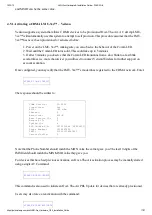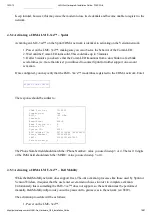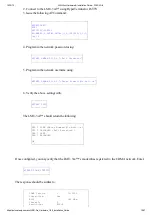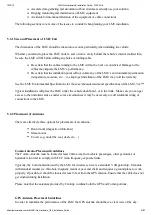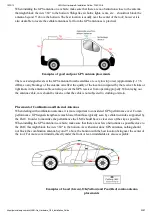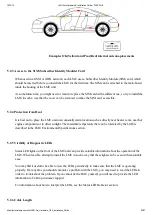
10/12/13
LMU-3xx Hardware & Installation Guide - PULS Wiki
https://puls.calamp.com/wiki/LMU-3xx_Hardware_%26_Installation_Guide
8/37
Antenna. Should one of the units be in a transmit mode the potential exists for the other unit to become
damaged. Therefore any LMU-3xx™ GPS Antenna should be kept at least four inches apart from any active
LMU-3xx™ GSM Antenna or any other active high power RF transmitter with power greater than 1 Watt.
3.1.2 Battery Back-up devices
Please properly dispose of the battery in any of the CalAmp products that utilize one, do not just throw used
batteries, replaced batteries, or units containing a back-up battery into the trash. Consult your local waste
management facility for proper disposal instructions.
3.1.3 Environmental Specifications
The LMU-3xx™ is designed to operate in environments typically encountered by fleet vehicles, including wide
temperature extremes, voltage transients, and potential interference from other vehicle equipment.
To ensure proper operation in such an environment, the LMU-3xx™ was subjected to standard tests defined
by the Society of Automotive Engineers (SAE). The specific tests included temperature, shock, vibration, and
EMI/EMC. These tests were performed by independent labs and documented in a detailed test report. In
accordance with Appendix A of SAE J1113 Part 1, the Unit is considered a “Functional Status Class B,
Performance Region II” system that requires Threat Level 3 Testing.
The following shows the environmental conditions the LMU is designed to operate in and the relevant SAE
tests that were performed. No formal altitude tests were conducted.
Size
1.84 x 3.0 x 0.78”, (46.5 x 77 x 19.7mm)
Weight
3.5 oz/99 g (with harness)
Operating Temperature
-30° C to +75° C
Storage Temperature
-40° C to +85° C
Humidity
0% to 95% relative humidity, at 50° C non-condensing
Shock and Vibration
SAE Test: SAE J1455 Compliant
Mil Standard 202G and 810F Compliant

















